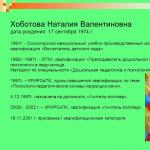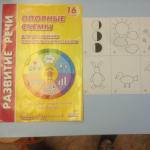Tests for assessing the mental development of children of three years
In this article:
In the fourth year of life, children without mental retardation are especially characterized by enhanced psychomotor development. The child becomes hardy, can travel long distances, enjoys new experiences, expands his own knowledge of the world around him.
What children can do at 3 years old: features of neuropsychic development
Children become more dexterous, coordination of small hand movements improves, visual control increases. It is in the fourth year of life that children show an increased interest in visual activity. Toddlers without mental retardation try to draw with great pleasure, not caring about the result.
It is the process of drawing itself that is of great importance for them, and not what happens in the end. That is why the finished work for the kids do not mean anything - they quickly forget about them. Visual activity plays a huge role in the mental development of 3-year-old children, the diagnosis of which must be carried out at every stage.
Children at this age must be able and want to fantasize.It is worth allowing them to use various objects that are unnecessary from the point of view of an adult - they will immediately find a use for them. These can be old mops, unnecessary pieces of iron or wooden bars, from which children of 3 years old will build cars, boats and even spaceships.
While playing and fantasizing, children try to model the behavior of adults, thus confirming the desire for independence. This is how kids get to know the world of adults.
Naturally, such a step in the mental development of 3-year-old children is possible due to the active development of speech. Toddlers at this age are already able to clearly and colorfully express their own feelings and emotions. Each word of the child is filled with meaning and is necessarily recognizable, despite some possible modifications.
Children at this age already have a significant vocabulary, use many parts of speech, communicating with peers and adults. It is no longer difficult for a kid to describe objects and objects, he is able to think visually and figuratively, build connections, generalize and even solve simple problems. However, the logic of thinking in children of 3 years is still significantly different from the logic of older children or an adult.
How to determine the level of mental development of children: tasks
Diagnostics of the mental development of a child of 3 years old can be carried out using testing based on the tasks from the table below. As a rule, developmental delays can manifest themselves as underdevelopment of speech and psychomotor functions, which will necessarily affect the main activities.
Already at the age of 3 years, special diagnostics will help to identify some features of the mental development of the baby. So, for example, if a child has mental retardation of cerebral-organic origin, then he will be characterized by underdevelopment:
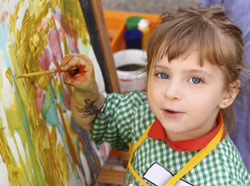
Diagnosis of 3-year-old children for mental retardation of somatogenic and psychogenic genesis can be carried out at home. Confirming signs of developmental delay will be:
- insufficient cognitive activity;
- unwillingness to perform tasks, accompanied by negative emotions;
- electoral activity with the choice of individual games;
- fast fatiguability.
In the table below, the main tasks that can be offered to children to perform to diagnose their mental development.
Tasks for identifying developmental disabilities in three-year-old children
Please note that the columns show reactions to tasks in healthy children and in 3-year-old children with mental developmental disabilities. Observing a preschooler, it will be possible to draw the appropriate conclusions.
| normal children | Children with developmental delays | |
| Motor skills | During walking and running, hand movements are free, coordination is not disturbed. The legs don't drag. The ball is thrown with both hands. While jumping up, they fall on half-bent legs. They know how to stop on a signal. | Stiffness of movements and hence the shuffling clumsy approach. Violation of coordination of movements. While jumping, the child does not take his feet off the floor, imitating squat movements, and is not able to stop on a signal. Cannot draw a line with a pencil due to a broken rhythm of movements and weak pressure. |
| Sensory-perceptual activity | The kid knows 6 primary colors and some shades, distinguishes geometric shapes; developed tactile skills. | Confuses colors, names of geometric shapes, does not try to draw them, has poor orientation in the size of objects, does not always recognize objects by touch. |
Intellectual activity |
She freely counts to five, distinguishes between the times of the day, asks a lot, requires explanations, likes to analyze plot pictures, listens to fairy tales with pleasure. | Knows the seasons, but asks almost nothing; a lot of distraction when performing tasks; cannot determine the plot of the picture; tries to speak in monosyllables; obvious sound disturbance. |
| Game activity | Children are happy to play role-playing games, the duration of which can reach half an hour. Favorite games appear. Often engaged in various kinds of buildings, fantasizing on this topic. | The games of such children are monotonous with a primitive plot, and outdoor games take up most of the time, unlike role-playing ones. They play for a short time, they are distracted, they cannot conceive and reproduce the building with the highlighting of forms. The structures are as simple as possible. |
| Skills | Children of 3 years old know how to dress themselves, fasten zippers and buttons, eat, know how to properly hold cutlery. | Basic skills are present, but some actions are not available for several more years (buttoning, zippers, Velcro). |
Testing of children of the fourth year of life for the diagnosis of developmental delays
A few simple tests that parents themselves can conduct will help determine the degree of mental development in a 3-year-old child. Detection of deviations should be a signal to seek medical advice.
Pyramid test. Normally developing children 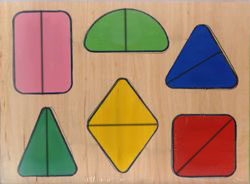 cope with the collection and analysis of the pyramid after a good example of adults. You can replace the pyramid with a nesting doll. The main purpose of testing is to determine the ability to see the difference between sizes and their ratio.
cope with the collection and analysis of the pyramid after a good example of adults. You can replace the pyramid with a nesting doll. The main purpose of testing is to determine the ability to see the difference between sizes and their ratio.
Item sorting test. Have your preschooler draw the geometric shapes from the pattern on the cards and color them in the appropriate color. When the drawings are ready, ask the kid to put the squares in one direction, circles in the other, rhombuses in the third. The purpose of the task is to test the understanding of the differences between geometric shapes and the ability to group objects.
Test for understanding the functions of objects. Lay out pictures of different objects in front of the baby and ask him to identify some of them by describing their functions. For example, this item can comb, and this one can show cartoons. A kid without mental retardation can easily cope with the definition of the functions of nine objects.
Test for understanding quantitative ratios. Show the crumbs cards with one and several objects. Ask him to choose a card with one item or two. The kid without mental retardation to cope with the task in 3.5 years.
Test for the ability to group objects. Suggest 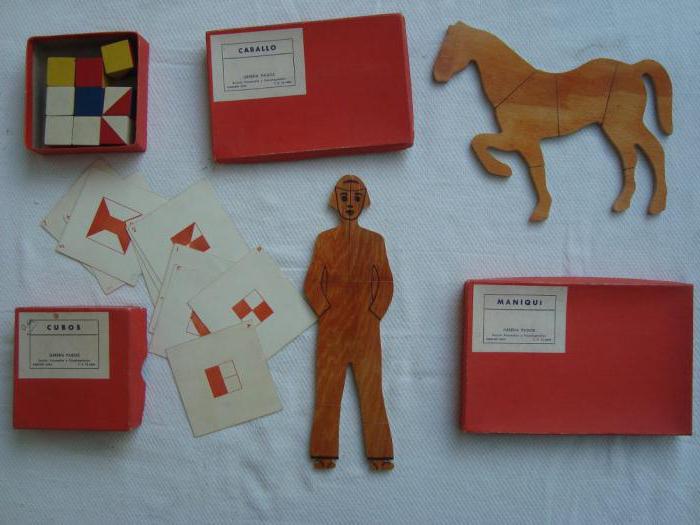 group the cards according to some criteria. For example, animals are assigned to one group, dishes to another, and transport to a third. With the help of such a test, a diagnosis of the ability to generalize according to signs can be carried out.
group the cards according to some criteria. For example, animals are assigned to one group, dishes to another, and transport to a third. With the help of such a test, a diagnosis of the ability to generalize according to signs can be carried out.
Test for understanding the general awareness of a child of 3 years. Ask your child about what to do when you want to eat or sleep. A three-year-old baby will have to state the algorithm of his actions in a given situation.
Diagnostics of orientation in space. Give the preschooler the task of laying out the objects in front of him in the same sequence in which they lay before. Ask the baby where is the top and where is the bottom, ask the child to hide the toy under the table or find a pencil on the table. In the fourth year of life, the baby will complete the task with a maximum of two errors.
attention diagnostics. Show your child the pictures in one hand and ask them to find a similar one among the pictures in the other hand. At 3 years old, the baby is able to find about 10 similar images.



